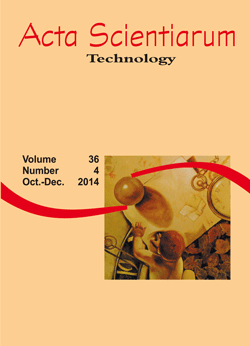<b>Technical evaluation of vehicle ignition systems: conduct differences between a high energy capacitive system and a standard inductive system
DOI:
https://doi.org/10.4025/actascitechnol.v36i4.21048Palavras-chave:
ignition modules performance, combustion, coil measurementResumo
An efficient combustion depends on many factors, such as injection, turbulence and ignition characteristics. With the improvement of internal combustion engines the turbulence intensity and internal pressure have risen, demanding more efficient and powerful ignition systems. In direct injection engines, the stratified charge resultant from the wall/air-guided or spray-guided system requires even more energy. The Paschen´s law shows that spark plug gap and mixture density are proportional to the dielectric rupture voltage. It is known that larger spark gaps promote higher efficiency in the internal combustion engines, since the mixture reaction rate rises proportionally. However, the ignition system must be adequate to the imposed gap, not only on energy, but also on voltage and spark duration. For the reported study in this work two test benches were built: a standard inductive ignition system and a capacitive discharge high energy ignition system, with variable voltage and capacitance. The influence of the important parameters energy and ignition voltage on the spark duration, as well as the electrode gap and shape were analyzed. It was also investigated the utilization of a coil with lower resistance and inductance values, as well as spark plugs with and without internal resistances.
Â
Downloads
Downloads
Arquivos adicionais
Publicado
Como Citar
Edição
Seção
Licença
DECLARAÇíO DE ORIGINALIDADE E DIREITOS AUTORAIS
Declaro que o presente artigo é original, não tendo sido submetido í publicação em qualquer outro periódico nacional ou internacional, quer seja em parte ou em sua totalidade.
Os direitos autorais pertencem exclusivamente aos autores. Os direitos de licenciamento utilizados pelo periódico é a licença Creative Commons Attribution 4.0 (CC BY 4.0): são permitidos o compartilhamento (cópia e distribuição do material em qualqer meio ou formato) e adaptação (remix, transformação e criação de material a partir do conteúdo assim licenciado para quaisquer fins, inclusive comerciais.
Recomenda-se a leitura desse link para maiores informações sobre o tema: fornecimento de créditos e referências de forma correta, entre outros detalhes cruciais para uso adequado do material licenciado.















